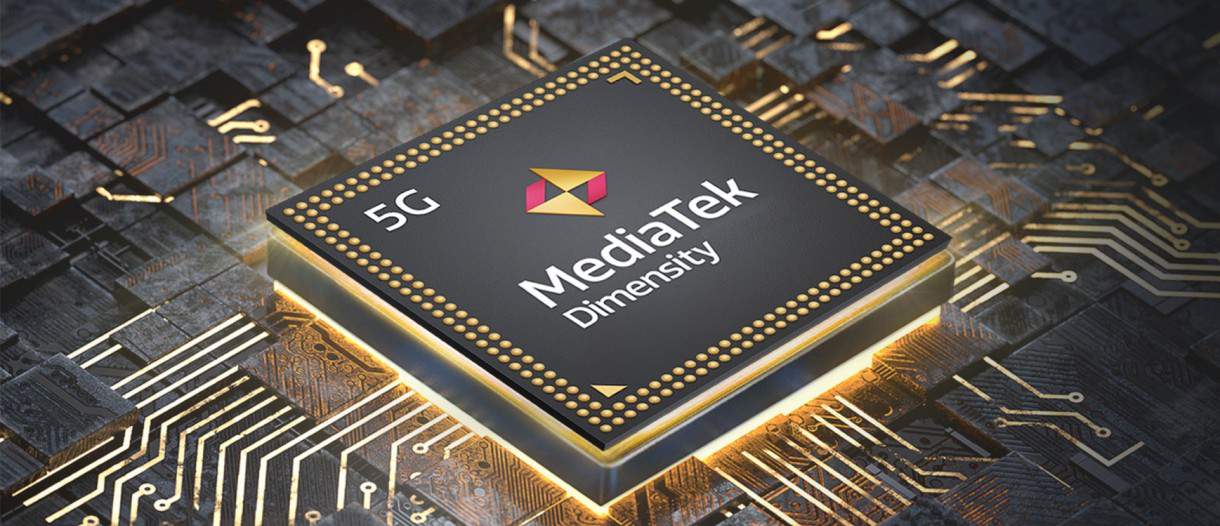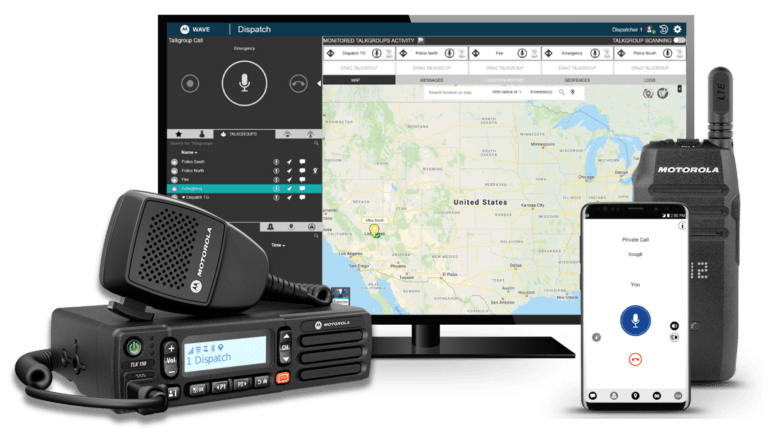Any links to online stores should be assumed to be affiliates. The company or PR agency provides all or most review samples. They have no control over my content, and I provide my honest opinion.
With the MediaTek Executive Summit upon us, this post aims to cover the history of Mediatek and their rise to become a key player in the world of system-on-chips.
In this comprehensive exploration, we will delve into MediaTek’s notable acquisitions, financial performance, and their remarkable range of chipsets tailored for smartphones, Chromebooks & tablets, smart homes, and even automotive networking products. Join us as we uncover the fascinating journey of MediaTek and its significant contributions to the ever-evolving world of technology.
Corporate History
MediaTek was originally established in 1997 as a unit of United Microelectronics Corporation (UMC), a Taiwanese semiconductor foundry. The unit was focused on designing chipsets for home entertainment products like optical drives and DVD players. On 28 May 1997, the unit officially spun off from UMC and incorporated as MediaTek Inc. The company was listed on the Taiwan Stock Exchange on 23 July 2001 under the stock code “2454”.
In the early years, MediaTek focused on optical drive chipsets before expanding into DVD player and digital TV chipsets. Throughout the 2000s, the company grew rapidly by supplying chipsets to manufacturers of optical drives, DVD players, mobile phones and other consumer electronics devices.
A major milestone came in 2005 when MediaTek acquired Inprocomm, a Taiwanese wireless semiconductor design company. This allowed MediaTek to enter the mobile phone chipset market. Over the next few years, MediaTek gained significant market share in mobile chipsets, especially in emerging markets like China, India and Southeast Asia.
MediaTek further expanded its chipset portfolio through several key acquisitions:
- In 2008, MediaTek acquired the cellular radio and baseband chipset divisions from Analog Devices for $350 million. This accelerated MediaTek’s move into mobile chipsets.
- In 2011, MediaTek acquired Ralink Technology for $248 million, gaining Wi-Fi chipset capabilities.
- In 2012, MediaTek acquired Coresonic, a Swedish producer of digital signal processing products, for $19 million.
- In 2014, MediaTek acquired MStar Semiconductor for $3.8 billion. MStar was a key rival in digital TV chipsets.
- In 2016, MediaTek completed the acquisition of Richtek Technology, a power management IC company, for $690 million.
By the early 2010s, MediaTek had become a top player in mobile chipsets, especially in emerging smartphone markets. The company also maintained a strong position in digital TV, optical storage and other home entertainment chipsets. MediaTek has consistently ranked among the top 10 fabless chip design companies globally in terms of revenue.
Key Acquisitions
Some of the major acquisitions in MediaTek’s history include:
- 2005: MediaTek acquired Inprocomm, a Taiwanese wireless semiconductor design company, for an undisclosed amount. This allowed MediaTek to enter the mobile chipset market.
- 2008: MediaTek acquired the cellular radio and baseband chipset divisions from Analog Devices for $350 million. This accelerated MediaTek’s move into mobile chipsets.
- 2011: MediaTek acquired Ralink Technology for $248 million. Ralink was a key player in Wi-Fi chipsets for mobile and consumer devices.
- 2012: MediaTek acquired Coresonic, a Swedish digital signal processing company, for $19 million. This expanded MediaTek’s audio and voice capabilities.
- 2014: MediaTek acquired rival digital TV chipset maker MStar Semiconductor for $3.8 billion. This consolidated MediaTek’s lead in TV chipsets.
- 2016: MediaTek acquired power management IC company Richtek Technology for $690 million. This allowed MediaTek to offer more integrated chipset solutions.
- 2021: MediaTek acquired the Wi-Fi chipset business from Intel for $250 million. This boosted MediaTek’s Wi-Fi 6 and 6E capabilities.
These strategic acquisitions have allowed MediaTek to expand into new product segments and gain technology capabilities to build more integrated chipset solutions.
Financial Performance
MediaTek has shown strong and consistent financial growth over the past decade:
- Revenue has grown from NT$53 billion in 2011 to NT$548 billion in 2021, reflecting a 9x increase.
- Gross profit has expanded from NT$20 billion in 2011 to NT$256 billion in 2021.
- Operating income has grown from NT$4 billion in 2011 to NT$127 billion in 2021.
- Net income has risen from NT$4 billion in 2011 to NT$111 billion in 2021.
MediaTek’s revenue growth has been driven by its strong performance in mobile chipsets, especially in emerging markets like China, India, Southeast Asia, Latin America and Africa. The company has consistently held the #2 position globally in smartphone chipset market share since 2014, behind Qualcomm.
Other factors driving MediaTek’s growth include:
- Gaining market share in digital TV and other home entertainment chipsets through the acquisition of MStar in 2014.
- Expanding into new product areas like voice assistant devices, Wi-Fi chipsets, automotive chipsets and IoT chipsets.
- Leveraging a fabless model with foundry partners like TSMC and UMC to efficiently scale production.
Chipsets for Smartphones

MediaTek is a leading supplier of chipset platforms for smartphones globally. Some of the major MediaTek smartphone chipset families include:
- Dimensity: MediaTek’s flagship 5G smartphone chipset lineup with integrated 5G modems. Popular models include Dimensity 9000, 1200, 1000, 900, 810 and 700 among others.
- Helio: MediaTek’s 4G LTE smartphone chipset series popular in mid-range phones. Top models include Helio G99, G96, G95, G90, P95 and P90 among others.
- MTK: MediaTek’s budget smartphone chipset lineup. Models like MT6765, MT6762 and MT6739 have been widely used in entry-level phones.
MediaTek’s strategy has focused on high integration and providing complete chipset platforms. By integrating components like application processors, modems, AI processing units, graphics and connectivity, MediaTek has reduced the complexity and cost for smartphone makers.
The company has also excelled in supporting the specific needs of markets like India, China, Southeast Asia and Africa with chipsets optimized for local performance and price points.
History of Mediatek Chipsets for Smartphones
The following is a history of some (not all) of they important mobile chipsets MediaTek have launched over the years,
Early Chipsets (pre-2010)
- MT6235 – Released in 2003, one of MediaTek’s first chipsets for GSM phones. Used in phones like the Samsung SGH-E700.
- MT6225 – Budget chipset launched in 2004, found in phones like the LG KG800 Chocolate.
- MT6227 – Low-cost chipset from 2006, used in phones like the Sony Ericsson W300.
- MT6516 – First chipset with integrated graphics (PowerVR MBX Lite GPU). Used in Sony Ericsson C702 in 2008.
Growth in Feature Phones (2010-2013)
- MT6573 – Popular chipset in 2011, with ARM Cortex-A5 CPU. Used in phones like Huawei Ideos X3.
- MT6575 – First dual-core chipset in 2012, with PowerVR SGX531 GPU. Phones like Lenovo A60 used this.
- MT6589 – Quad-core chipset with PowerVR SGX544 GPU, big in 2013 phones like Oppo Find 5.
Transition to Smartphones (2013-2016)
- MT6572 – Budget quad-core chipset from 2013, found in phones like Asus Zenfone 4.
- MT6582 – More powerful budget quad-core chipset used in Xiaomi Redmi 1S.
- MT6752 – First 64-bit octa-core chipset in 2014, used in Elephone P7000.
- MT6795 – High-end chipset in 2015 with PowerVR G6200 GPU. Used in phones like Huawei P8max.
- MT6750 – Popular budget octa-core chipset in 2016, used in phones like Samsung Galaxy J7.
Growth in 4G Smartphones (2016-2019)
- MT6737 – Budget quad-core chipset with 4G LTE, used in Samsung Galaxy J2 Pro.
- MT6763 – More advanced octa-core 4G chipset found in Xiaomi Redmi Y1.
- MT6771 – High performance chipset with Helio P60 CPU used in Vivo V9.
- MT6765 – Upper mid-range chipset in 2019 powering phones like Oppo A9 2020.
- MT6785 – 5G-enabled chipset in 2019, used in phones like Vivo Z1 Pro 5G.
Recent Chipsets (2020 onwards)
- Helio G90T – Gaming focused chipset used in phones like Redmi Note 8 Pro and Realme 6.
- Dimensity 800 – 5G chipset in 2020 phones like Realme X50 5G.
- Dimensity 1100 – Upper mid-range 5G chipset used in OnePlus Nord 2 5G.
- Dimensity 9000 – Flagship 5G chipset in 2022 phones like Xiaomi 12S Ultra.
- MediaTek Dimensity 9200: Flagship chipset used in 2023 on phones like the Xiaomi 13T Pro
Chipsets for Chromebooks & Tablets
For Chromebooks and tablets, MediaTek provides the Kompanio series of chipsets:
- Kompanio 1300T: MediaTek’s flagship chipset for premium Chromebooks launched in 2021. Built using a 6nm process, it integrates an octa-core Arm Cortex-A78 CPU up to 3GHz, Mali-G77 MC9 GPU and MediaTek APU 3.0 AI processor.
- Kompanio 1200: Used in mid-range Chromebooks with octa-core Cortex-A76 CPU, Mali-G57 GPU and MediaTek APU 3.0.
- Kompanio 820 and 810: Entry-level Chromebook chipsets with quad-core A55 CPUs and PowerVR GE8320 GPUs.
For tablets, MediaTek offers chipsets like the MT8788 and MT8183 using quad-core A73 CPUs plus Mali-G72 MP3 graphics. The Kompanio series also powers many mid-range Android tablets.
MediaTek’s strategy for Chromebooks and tablets has focused on delivering integrated solutions with multimedia, AI, connectivity and battery life optimizations.
History of Mediatek Chipsets for Chromebooks & Tablets
Early Chipsets (2016-2018)
- MT8173C – First MediaTek chipset for Chromebooks in 2016, used in early models like ASUS Chromebook Flip C100PA. Had quad-core Cortex-A53 CPU.
- MT8176 – Upgrade in 2017 with dual Cortex-A72 + quad Cortex-A53, found in Lenovo Flex 11 Chromebook.
- MT8183 – 2018 chipset with more powerful quad Cortex-A73 CPU, used in Lenovo Chromebook C330.
Transition to Kompanio Brand (2019-2020)
- MT8192 – First Kompanio chipset in 2019, octa-core Cortex-A73 CPU. Used in Lenovo Chromebook Duet.
- MT8195 – Higher-end Kompanio chip in 2020 with Cortex-A76 CPU. Seen in ASUS Chromebook Flip CM5.
- MT8192B – Iteration of MT8192 with minor updates, used in 2020 models like HP Chromebook x360 14c.
Recent Premium Kompanio Chipsets (2021 onwards)
- Kompanio 1300T – Flagship 8-core Cortex-A78 chipset in 2021, used in Acer Chromebook Spin 713.
- Kompanio 1200 – Slightly lower-end 6-core Cortex-A76 model, in 2022 devices like ASUS Chromebook CX9.
- Kompanio 520 – New entry-level chipset with 6-core Cortex-A55 CPU in 2022 Chromebooks.
- Kompanio 528 – Iteration with minor improvements over Kompanio 520.
Chipsets for Smart Home
MediaTek offers several chipset families for smart home and IoT devices:
- Genio: Includes chipsets like MT8516, MT8518, MT8521 optimized for smart speakers, displays and home automation. Integrates DSP and ML for voice assistant edge AI.
- Filogic: Wi-Fi 6, 6E and 7 chipsets like the Filogic 880 and 380 for whole home mesh networking and connectivity.
- Pentonic: Smart TV chipsets like the Pentonic 2000 with AI picture quality, Dolby Vision HDR and 8K video support.
- Halo: Platform for matter devices to enable smart home interoperability.
- i500: Chipset for 4G/5G connectivity in industrial IoT applications.
MediaTek’s smart home chipset strategy focuses on supporting the latest standards like Wi-Fi 6/7, Bluetooth 5.2, Matter and voice assistant edge AI. The company works closely with brands like Amazon, Google and Zigbee.
History of Mediatek Chipsets for Smart Home and Entertainment
Early Chipsets (pre-2010)
- MT8560 – Released in 2008, one of MediaTek’s first chipsets for optical disc drives and home entertainment devices.
- MT8563 – Chipset launched in 2009 for DVD players and Blu-ray disc players. Supported HD video decoding.
Transition to Smart Home Focus (2010-2015)
- MT8507 – Launched in 2010, one of MediaTek’s first chipsets designed for smart TVs and smart home devices.
- MT5592 – Quad-core chipset from 2013 optimized for smart TVs and streaming dongles. Used in devices like Amazon Fire TV Stick.
- MT5595 – Higher performance smart TV chipset released in 2014, supported 4K video. Used in Sony Bravia TVs.
IoT and Voice Assistant Products (2016-2020)
- MT8516 – Chipset launched in 2017 focused on smart speakers and voice assistant devices. Offered edge AI processing.
- MT8518 – Iteration of MT8516 launched in 2018 with upgrades for voice UI and far-field voice recognition.
- MT8521 – Chipset from 2019 designed for smart displays like Google Nest Hub.
- MT8685 – WiFi 6 and Bluetooth 5.1 chipset released in 2020, used in mesh networking products.
Recent Premium Chipsets (2021 onwards)
- Genio 1200 – Launched in 2021 for premium smart speakers and appliances with more advanced AI processing.
- Pentonic 2000 – Flagship smart TV chipset with 8K support and 120Hz refresh rates, launched in 2021.
- Genio 1300 – Latest edge AI chipset from 2022 for next-generation voice assistants and cameras.
- Filogic 880 – WiFi 7 chipset released in 2022, enables high-speed wireless connectivity up to 33Gbps.
MediaTek Dimensity Auto
In early 2022, MediaTek announced the launch of Dimensity Auto chipsets for in-vehicle infotainment systems. Key highlights include:
- Built on TSMC 4nm process with octa-core CPU, nine core GPU and MediaTek AI processor.
- Supports one 4K or two full HD displays with HDR10+ playback.
- Integrated 5G modem with satellite positioning support.
- MediaTek MiraVision graphics engine for Google Android Automotive OS.
- Advanced driver assistance system (ADAS) capabilities including surround view cameras.
- Integrated cybersecurity framework to protect against automotive cyber attacks.
The Dimensity Auto platform aims to bring leading-edge infotainment, connectivity and ADAS features to the next generation of smart vehicles.
Networking Products for Wi-Fi and 5G
For home and enterprise networking, MediaTek offers both Wi-Fi and 5G chipset solutions:
- Filogic Wi-Fi: Includes Wi-Fi 6, 6E and the new 7 chipsets for mesh networking, extenders and broadband CPEs.
- T750 5G modem: MediaTek’s first 5G modem with support for both mmWave and sub-6 GHz 5G networks. Used in 5G home routers and hotspots.
- T700 5G modem: A more compact sub-6 GHz 5G modem for IoT devices and industrial applications.
- LinkHub: Platform for 5G NR-based enterprise networking including SD-WAN routers, gateways and managed Wi-Fi.
MediaTek is actively developing Wi-Fi 7, 5G Advanced and multi-link networking technologies for next-generation connectivity demands.
History of Mediatek Chipsets for Smart Home and Entertainment
Early Wi-Fi Chipsets
- RT3050 (2010) – One of MediaTek’s first Wi-Fi chipsets after acquiring Ralink, used in routers and USB Wi-Fi dongles. Supported 802.11n speeds up to 150Mbps.
- RT3070 (2011) – Successor to the RT3050, also 802.11n up to 150Mbps. Used in devices like the TP-Link TL-WR710N pocket router.
- RT3572 (2012) – First dual band 802.11n chipset from MediaTek, up to 300Mbps speed. Seen in ASUS RT-N10 routers.
802.11ac Era
- MT7610 (2014) – First 802.11ac chipset from MediaTek, wave 1 SU-MIMO supporting up to 433Mbps. Used in the Linksys WRT1900AC router.
- MT7612U (2015) – USB 3.0 adapter version of the MT7610, used in dongles like the TP-Link Archer T4U.
- MT7620A (2016) – Lower cost 802.11ac chipset, up to 867Mbps. Used in many budget AC routers.
Transition to Filogic Brand
- MT7621A (2017) – Rebranded as Filogic 310, used in routers like the Xiaomi Mi Router 4A.
- MT7615 (2018) – First Wi-Fi 6 (802.11ax) chip, up to 1.2Gbps. Rebranded as Filogic 880.
- MT7915 (2019) – Higher-end Wi-Fi 6 chipset supporting up to 6GHz. Used in routers like ASUS RT-AX89X.
Recent Filogic Chipsets
- Filogic 380 (2020) – Wi-Fi 6E chipset with 6GHz support. Used in devices like the Netgear Nighthawk RAXE500.
- Filogic 880 (2021) – Wi-Fi 7 chip, up to 33Gbps speeds. Seen in the ASUS RT-AX99 router.
- Filogic 680 (2022) – Mid-range Wi-Fi 6E chipset for mesh systems and extenders.
Early 4G/5G Modems
- MT6290 (2015) – One of MediaTek’s first LTE modems, CAT6 speeds up to 300Mbps downlink.
- MT7621 (2016) – Integrated Wi-Fi/LTE modem chip for mobile hotspots and routers. Used in Huawei E5788.
5G Modem Chipsets
- MT6885 (2019) – First integrated 5G modem chipset, sub-6GHz only. Used in phones like Oppo Reno3 5G.
- MT6893 (2020) – 5G modem with mmWave support, up to 7.67Gbps. Used in phones like LG Wing 5G.
- T750 (2021) – Standalone 5G mmWave + sub-6GHz modem for hotspots like Inseego FX2000.
- T770 (2022) – Iteration of T750 with support for 5G carrier aggregation.
Internet of Things
MediaTek offers an extensive range of chipsets for IoT devices across consumer, industrial and automotive segments:
- Genio: Edge AI chipsets for smart speakers, displays and cameras.
- i500: Cellular IoT platform with integrated 5G, GPS and AI. Targets industrial IoT.
- i300: Entry-level NB-IoT chipset for low power IoT connectivity.
- Halo: Platform to enable smart home device interoperability using Matter.
- AutoChips: Chipsets for in-vehicle infotainment, telematics and ADAS.
MediaTek is also a member of the RISC-V International Board of Directors and is developing RISC-V based microcontroller units (MCUs) for various IoT applications.
The company aims to support the growing IoT market with optimized chipsets that offer connectivity, edge AI, multimedia and robust security.
I am James, a UK-based tech enthusiast and the Editor and Owner of Mighty Gadget, which I’ve proudly run since 2007. Passionate about all things technology, my expertise spans from computers and networking to mobile, wearables, and smart home devices.
As a fitness fanatic who loves running and cycling, I also have a keen interest in fitness-related technology, and I take every opportunity to cover this niche on my blog. My diverse interests allow me to bring a unique perspective to tech blogging, merging lifestyle, fitness, and the latest tech trends.
In my academic pursuits, I earned a BSc in Information Systems Design from UCLAN, before advancing my learning with a Master’s Degree in Computing. This advanced study also included Cisco CCNA accreditation, further demonstrating my commitment to understanding and staying ahead of the technology curve.
I’m proud to share that Vuelio has consistently ranked Mighty Gadget as one of the top technology blogs in the UK. With my dedication to technology and drive to share my insights, I aim to continue providing my readers with engaging and informative content.







